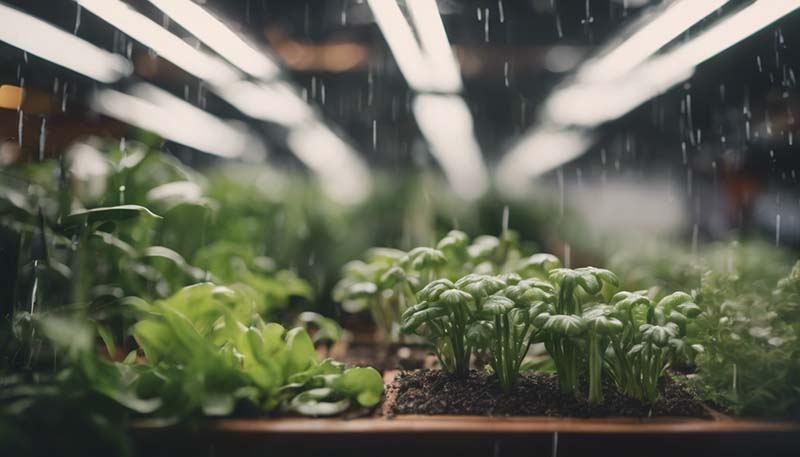The Role of Humidity in Indoor Gardening
Humidity plays a crucial role in the health and growth of plants in indoor gardening. It affects various aspects of plant physiology, including transpiration, photosynthesis, and nutrient uptake. In this article, we will explore the importance of humidity, how it impacts indoor plants, and ways to manage it effectively.
Understanding Humidity
Humidity refers to the amount of water vapor in the air. It is typically measured as a percentage. Indoor humidity can vary depending on factors such as the weather, heating and cooling systems, and the presence of plants. Ideal humidity levels for indoor plants range from 40% to 60%, although specific plants may have different requirements.
Advertisement
Effects of Humidity on Indoor Plants
Transpiration
Transpiration is the process by which plants release water vapor through their leaves. High humidity can slow down transpiration, which may lead to overwatering issues and root rot. On the other hand, low humidity can cause plants to lose water too quickly, leading to wilting and dry leaves.
Photosynthesis
Humidity can also affect the rate of photosynthesis. Some plants, particularly tropical species, require high humidity to maintain the stomata (pores) on their leaves open for optimal gas exchange. If the humidity is too low, these stomata may close, reducing the plant's ability to photosynthesize and grow.
Nutrient Uptake
Proper humidity levels are essential for nutrient uptake in plants. Low humidity can cause the soil to dry out too quickly, making it difficult for plants to absorb nutrients. In contrast, high humidity can lead to excess moisture in the soil, which can cause nutrient leaching and root rot.
Pest and Disease Control
Humidity can influence the presence of pests and diseases in indoor gardens. Some pests, such as spider mites and aphids, thrive in dry conditions, while others, like fungus gnats and powdery mildew, prefer high humidity. Maintaining the right humidity levels can help prevent pest and disease problems.

Managing Humidity in Indoor Gardens
Monitoring Humidity
Regularly monitoring humidity levels is essential for maintaining a healthy indoor garden. You can use a hygrometer, a device that measures humidity, to keep track of the moisture levels in your space.
Increasing Humidity
If the humidity in your indoor garden is too low, you can take several steps to increase it:
- Place a tray of water near your plants to evaporate moisture into the air.
- Use a humidifier to add moisture to the air.
- Group plants together to create a more humid microclimate.
- Mist your plants with water regularly.
Decreasing Humidity
If the humidity is too high, you can take the following measures to reduce it:
- Improve ventilation in your indoor garden by using fans or opening windows.
- Reduce the frequency of watering your plants.
- Use a dehumidifier to remove excess moisture from the air.
- Avoid overwatering and ensure proper drainage in your pots.
Conclusion
Managing humidity is a critical aspect of successful indoor gardening. By understanding the effects of humidity on plant growth and taking steps to maintain optimal levels, you can create a thriving indoor garden that supports the health and well-being of your plants.
Comment